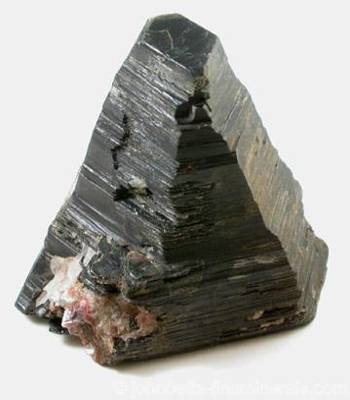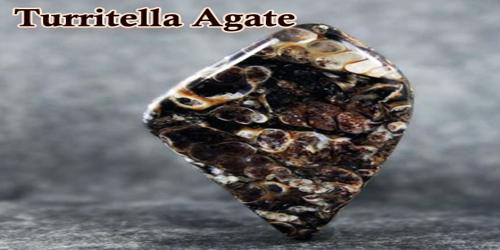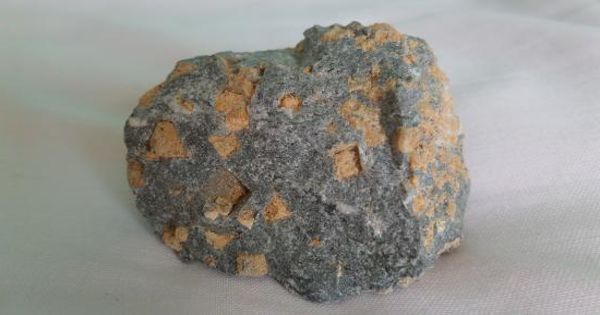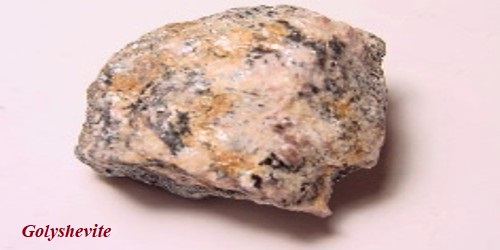Biotite is a common phyllosilicate mineral within the mica group, with the approximate chemical formula K(Mg, Fe)3AlSi3O10(F, OH)2. The name “biotite” is used in the field and in entry-level geology courses because these minerals generally cannot be distinguished without optical, chemical, or x-ray analysis.
More generally, it refers to the dark mica series, primarily a solid-solution series between the iron-endmember annite, and the magnesium-endmember phlogopite; more aluminous end-members include siderophyllite. Biotite was named by J.F.L. Hausmann in 1847 in honor of the French physicist Jean-Baptiste Biot, who performed early research into the many optical properties of mica.
General Information
- Category: Dark mica series
- Formula: K(Mg, Fe)3AlSi3O10(F, OH)2.
- Crystal system: Monoclinic
- Crystal class: Prismatic (2/m) (same H-M symbol).

Properties
It appears greenish to brown or black, and even yellow when weathered. It can be transparent to opaque, has a vitreous to pearly luster, and a grey-white streak. When it is found in large chunks, they are called “books” because it resembles a book with pages of many sheets. The color of biotite is usually black and the mineral has a hardness of 2.5-3 on the Mohs scale of mineral hardness.
- Color: Dark brown, greenish-brown, blackish-brown, yellow, white
- Crystal habit: Massive to platy
- Cleavage: Perfect on the {001}
- Fracture: Micaceous
- Tenacity: Brittle to flexible, elastic
- Mohs scale hardness: 2.5–3.0
- Luster: Vitreous to pearly
- Streak: White
- Diaphaneity: Transparent to translucent to opaque
- Specific gravity: 2.7–3.3
Occurrence
Biotite is found in a wide variety of igneous and metamorphic rocks. For instance, biotite occurs in the lava of Mount Vesuvius and in the Monzoni intrusive complex of the western Dolomites. Biotite in granite tends to be poorer in magnesium than the biotite found in its volcanic equivalent, rhyolite. It is an essential phenocryst in some varieties of lamprophyre. It is occasionally found in large cleavable crystals, especially in pegmatite veins, as in New England, Virginia and North Carolina. Other notable occurrences include Bancroft and Sudbury, Ontario.
Uses
It is used extensively to constrain ages of rocks, by either potassium-argon dating or argon-argon dating. Because argon escapes readily from the biotite crystal structure at high temperatures, these methods may provide only minimum ages for many rocks. It is also useful in assessing temperature histories of metamorphic rocks because the partitioning of iron and magnesium between biotite and garnet is sensitive to temperature.
Information Source:
















